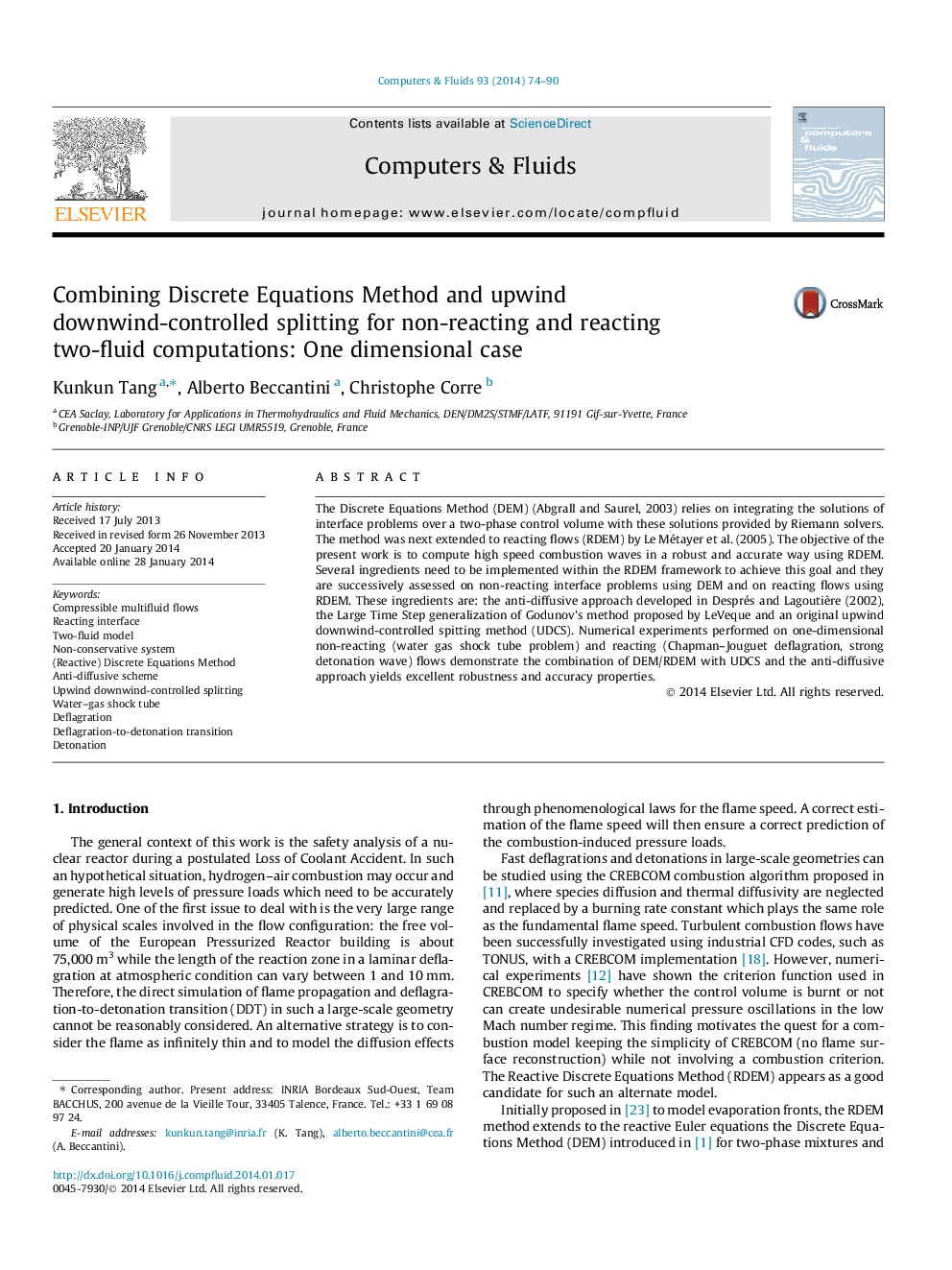| Article ID | Journal | Published Year | Pages | File Type |
|---|---|---|---|---|
| 768457 | Computers & Fluids | 2014 | 17 Pages |
•Coupling of DEM and antidiffusive method to compute (reactive) interfaces.•Enhancement of robustness using Large Time Step (LTS) approach.•We propose a new approach (UDCS) easier for multi-D unstructured computation.•Investigation of accuracy/robustness on non-reactive and reactive fronts.
The Discrete Equations Method (DEM) (Abgrall and Saurel, 2003) relies on integrating the solutions of interface problems over a two-phase control volume with these solutions provided by Riemann solvers. The method was next extended to reacting flows (RDEM) by Le Métayer et al. (2005). The objective of the present work is to compute high speed combustion waves in a robust and accurate way using RDEM. Several ingredients need to be implemented within the RDEM framework to achieve this goal and they are successively assessed on non-reacting interface problems using DEM and on reacting flows using RDEM. These ingredients are: the anti-diffusive approach developed in Després and Lagoutière (2002), the Large Time Step generalization of Godunov’s method proposed by LeVeque and an original upwind downwind-controlled spitting method (UDCS). Numerical experiments performed on one-dimensional non-reacting (water gas shock tube problem) and reacting (Chapman–Jouguet deflagration, strong detonation wave) flows demonstrate the combination of DEM/RDEM with UDCS and the anti-diffusive approach yields excellent robustness and accuracy properties.
